Group Group IV ((+)ssRNA) Rank Species | ||
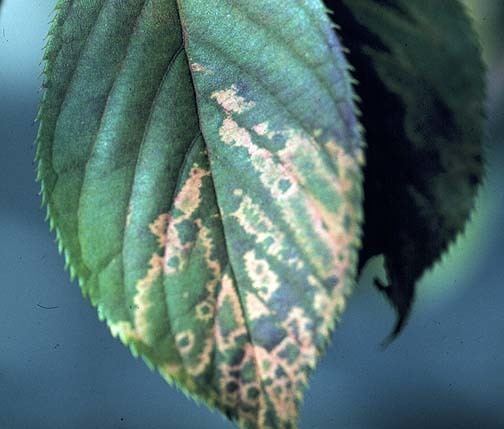 | ||
Similar Prune dwarf virus, Apple chlorotic leafspot v, Apple mosaic virus, Bromoviridae, Tomato ringspot virus | ||
Prunus necrotic ringspot virus (PNRSV) is a plant pathogenic virus causing ring spot diseases affecting species of the genus Prunus, as well as other species such as rose (Rosa spp.) and hops (Humulus lupulus). PNRSV is found worldwide due to easy transmission through plant propagation methods and infected seed. The virus is in the family Bromoviridae and genus Ilarvirus. Synonyms of PNRSV include European plum line pattern virus, hop B virus, hop C virus, plum line pattern virus, sour cherry necrotic ringspot virus, and peach ringspot virus.
Contents
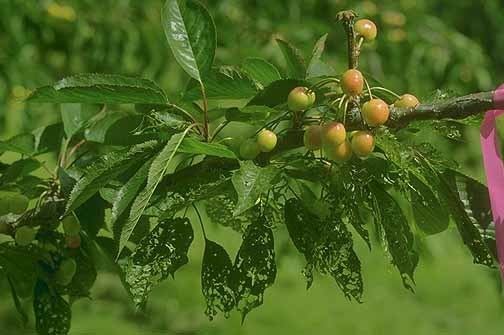
Hosts and Symptoms
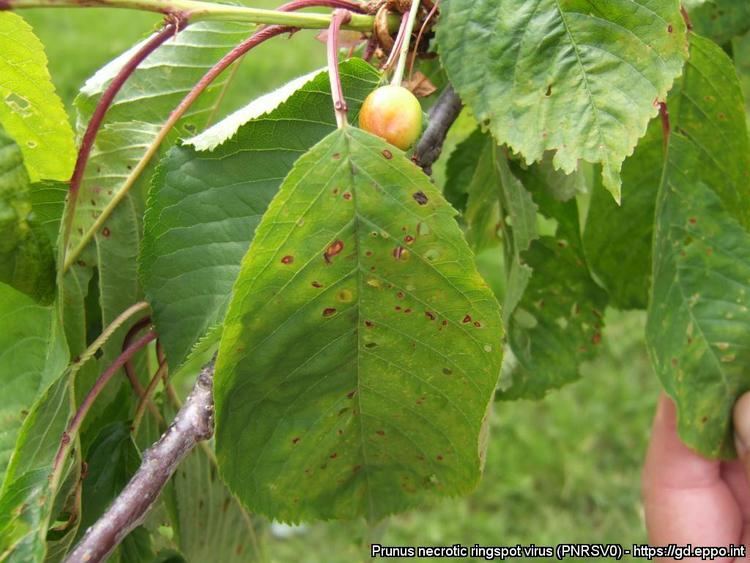
All cultivated species of the Prunus genus, which includes plums, cherries, apricots, almonds, and peaches, are susceptible to one or more strains of PNRSV. Hops and rose are also susceptible to infection by the virus. Other susceptible hosts used for diagnosis include Chenopodium quinoa Willd., sunflower (Helianthus annus), and Momordica balsamina.
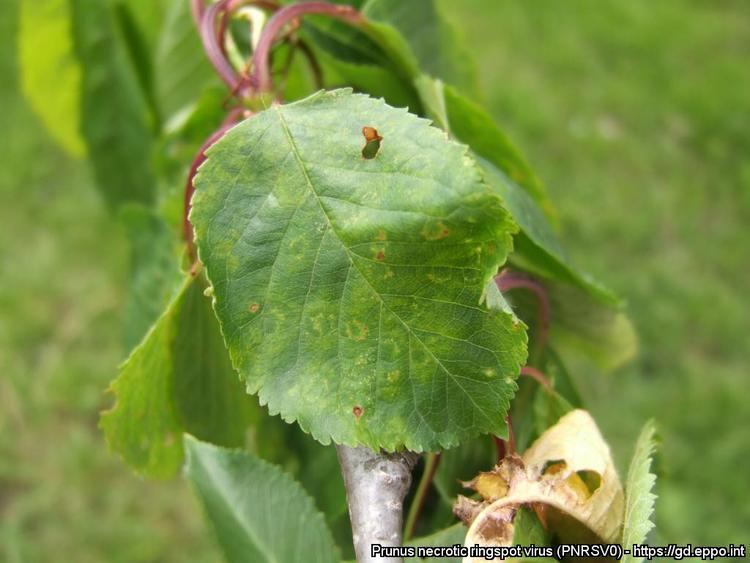
Symptoms on orchard trees can include death of buds and roots, reduced tree survival and uniformity, and increased susceptibility to winter injury. Some common symptoms also include necrotic “shot holes” in leaves or rugosity and mosaic symptoms. In sweet cherries, PNRSV causes reduced leaf size and produces diffused chlorotic rings and/or spots. Generally, symptoms of PNRSV appear in the year following infection, and then becomes symptomless, although some strains cause recurrent symptoms annually. Although adult trees can show recovery from initial symptoms, keeping young trees virus-free is very important because the virus can cause long-lasting stunting compared to healthy trees. It is important to note that symptom severity varies due to host cultivar and viral isolate.
Transmission and Epidemiology
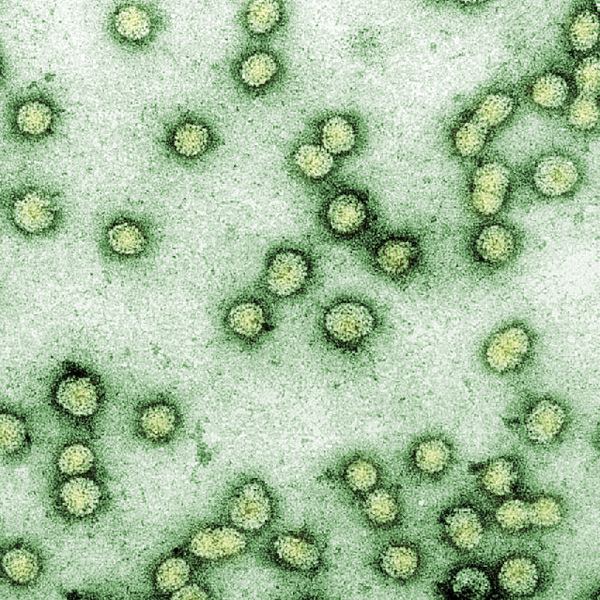
PNRSV can be transmitted through plant propagation methods, making spread through tree nursery stock and root grafting in orchards problematic. The virus also has been shown to infect and transmit through pollen and seeds. PNRSV has been shown to be transmitted by bees carrying infected pollen into orchards. PNRSV infects all seed parts, therefore infection of seed can occur from an infected pollen grain, ovule, or both. Seed transmission incidence can be different among different species or varieties of hosts; however, host factors that control viral seed transmission are unknown. Cross pollination with PNRSV infected pollen to healthy plants has shown that the virus can also infect the fruit and not just seeds. The virus can also be transmitted by thrips; however, the contribution and importance of thrips transmission is unknown.
Management and Control
The most important measure in controlling PNRSV is through planting of certified virus-free trees. Tree nurseries producing propagative material can use thermotherapy (keeping cultures at 38˚ C for at least 20 days), and/or apical meristem cultures to eliminate PNRSV. Prompt removal of infected trees is often recommended as a control strategy, but is not practical for most growers. Field studies have shown that planting of same or similar cultivars near an infected orchard favored earlier infection than when different cultivars were grown, indicating that planting of unrelated cultivars could help slow spread of the virus and allow healthy trees to bear fruit before infection. Genetically engineered resistance may be a possibility for control in the future using RNA interference silencing.
